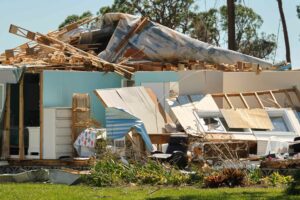Imagine yourself walking into a courtroom. Let’s say you’ve been sued by a disgruntled employee alleging you unlawfully fired them. Unfortunately, their lawyer is very good at making the judge believe that they were the victim of workplace abuse. Despite documentation that clearly demonstrates their poor performance as an employee—including unexcused absences, frequently missed deadlines, and complaints from other employees regarding their conduct—you opted to represent yourself to forgo additional legal fees. Without legal representation, you fail to introduce evidence of poor workmanship in your defense, and you overlook any viable objections.
Now ask yourself: Was saving the initial expense of a lawyer lucrative, even with the knowledge that if you lose, it will cost you more money? This hypothetical scenario paints a picture of a level of risk comparable to the risk of filing a large loss insurance claim without a public adjuster.
With the involvement of a public adjuster, a claim settles for more, which means more money for you to restore your property to its former glory. Without our assistance, your settlement could be lower, resulting in a lower payout of the claim as a whole.
Do You Know Your Worth?
In 2022, Hurricane Ian swept through the Florida coast, destroying homes, businesses, and livelihoods. Bacon’s Furniture in Port Charlotte, Florida, experienced a total building and inventory loss due to the high winds. The hurricane pulled off the roof down to the plywood, leaving bits of the roof sprinkled among the rubble.
As a furniture store, the inside of the building contained dining room chairs that no one would ever use for a Thanksgiving meal, couches, and armchairs that would never spark sibling rivalry during family movie night, and beds that would never receive praise for giving their owners the best sleep of their lives.
The financial loss would cost Bacon millions, but their carrier’s initial offer was only slightly over two million dollars. Enter Premier Claims.
Our experts did a thorough inspection of the damage outside of the building, as well as the torn and broken furniture inside. After multiple negotiations, inspections with a handful of experts, and hiring a Business Personal Property (BPP) company to do a full inventory of the damaged furniture, we got Bacon’s carrier to release over thirteen million dollars.
Don’t Settle For Less
Bacon could have settled and accepted the two million, but it wouldn’t have covered the entirety of the cost for the damage and loss of inventory sustained by the store. By retaining Premier Claims, Bacon’s Furniture benefited significantly from higher payouts, even with Premier’s added fee expenses.
At Premier Claims, we understand the importance of transparency and trust. Our fee structure varies depending on the state and the specifics of the claim. In some cases, fees are billed hourly, while in others, they are contingent on the successful resolution of your claim. Rest assured that we’re committed to advocating for your best interests and aim to maximize the potential of your claim. We’re here to provide the support and expertise you need, tailored to your situation.
Empower Yourself with Premier Claims
Don’t let concerns about our fee overshadow the significant benefits of partnering with Premier Claims. With our full team of experts on your side, you can navigate the claims process confidently, knowing that you have dedicated advocates fighting for your rights under your policy. Contact us today to learn more about how we can help secure the compensation you deserve.




